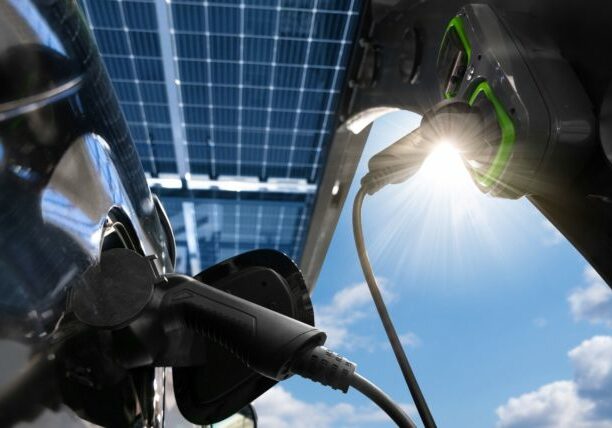September 25, 2017
Solar+Storage Offers Hope as Irma and Harvey Plunge Much of the Southeast into Darkness
By Seth Mullendore
The 2017 hurricane season is forcing many communities and states to once again focus on disaster preparedness and the critical role of resilient power during emergencies. With millions left in the dark throughout the Southeast, hurricanes Harvey and Irma have been another wake-up call to the vulnerability of the country’s aging electricity system and a reminder that disadvantaged communities are often hardest hit when disasters strike. Despite widespread outages, a few success stories have also emerged, demonstrating the potential of solar+storage to deliver reliable power in the face of extreme weather.
Hurricane Irma was the most powerful storm to hit the U.S. coastline since Katrina struck land in August 2005. According to reporting by The Atlantic, more than 10 million people in Florida lost power, setting a new record for hurricane-related outages in the U.S. Hundreds of thousands of Florida residents were still without power more than a week after Irma passed through, and utilities have said it will take months of work to rebuild the grid. Another million customers lost power in Georgia along with hundreds of thousands in North and South Carolina. Harvey severed power to more than 300,000 customers in Texas.
So far, over twenty deaths in the United States have been attributed to Hurricane Irma, with at least eight of those tragically occurring due to loss of electricity, which caused a loss of air conditioning in a senior care facility in Hollywood, Florida. In Texas, heavy rains led to diesel generator failures that resulted in toxic chemical fires at the Arkema chemical plant.
But along with these all-too-familiar types of tragedies, there have been some rays of hope for the future: multiple Florida residents were able to keep their homes powered during outages thanks to residential solar+storage systems, Florida’s SunSmart E-Shelter Program provided solar+storage powered communications and charging for residents at multiple schools across the state, and one Florida city kept traffic lights running with portable signals powered by solar+storage.
These success stories are encouraging, but it’s disheartening to see communities suffer again through lessons that we should have learned before. Hurricane Katrina and Superstorm Sandy already showed us that the grid is vulnerable, diesel generators fail, and the most vulnerable members of our communities are most at risk during weather emergencies.
After the devastation of Hurricane Katrina in 2005, Clean Energy Group highlighted the need for new resilient technology solutions in our report Energy Security and Emergency Preparedness: How Clean Energy Can Deliver More Reliable Power for Critical Infrastructure and Emergency Response Missions. That was twelve years ago, when many were still uncertain about the cost and performance of solar power, and battery storage was largely unknown. Seven years later, Hurricane Sandy hit the Northeast with such devastation that the need to develop better resilient power solutions once again began to resonate with federal, state, and local leaders.
The following year, Federal Emergency Management Administration (FEMA) officials from the Northeastern states most impacted by Sandy issued a report for the President of the United States, Hurricane Sandy Rebuilding Strategy: Stronger Communities, A Resilient Region. The report put forth recommendations that prioritized 1) addressing the heightened risk to vulnerable populations and 2) making the supply of power to critical community facilities smarter, more flexible and resilient to extreme weather events.
Many organizations, including Clean Energy Group, prepared analysis and reports addressing how the states impacted by Sandy could rebuild their grid infrastructure and distributed generation resources in more innovative, resilient, and sustainable ways to enable both mitigation and recovery strategies that could lessen the harmful impacts of long-term grid outages. Clean Energy Group also took on the role of assisting states and communities in implementing these recommendations, helping them get resilient power technologies installed and working to provide backup power where it is needed the most.
Clean Energy Group’s Resilient Power Project (RPP) has been working with states and communities across the country since Superstorm Sandy to advance new policies and programs that can enable more development of resilient renewable energy and energy storage solutions to benefit low-income and otherwise disadvantaged communities. RPP’s 2014 paper, Resilient Power: Evolution of a New Clean Energy Strategy to Meet Severe Weather Threats, outlined the dangers that power outages can pose to our most vulnerable populations, the failures of traditional backup power sources, and the opportunities to develop distributed energy systems with clean and dependable energy technologies. Since then, we’ve focused our efforts on analyzing the economics of resilient power systems (Resilience for Free and Closing the California Clean Energy Divide), exploring system financing (Financing for Clean, Resilient Power Solutions and A Resilient Power Capital Scan), and supporting the development and deployment of battery storage integrated with solar PV (Resilient Power Project Toolkits and Featured Resilient Power Installations).
The project has seen significant progress and over the last four years: the cost of battery storage and solar PV has dramatically declined, more of these systems are being deployed, and more vulnerable populations are realizing the economic and resilient power benefits of solar+storage.
One recent example of our efforts is the Sterling Municipal Light Department’s energy storage system. Clean Energy Group just released a short documentary video on this project that is saving ratepayers in the Town of Sterling, Massachusetts about $400,000 a year in electricity system costs, while also providing resilient solar+storage power to the town’s police and emergency dispatch center in the event of a long-duration power outage. This project came about because of a state grant from the Community Clean Energy Resiliency Initiative, a program that was established by the Massachusetts Department of Energy Resources in the aftermath of Superstorm Sandy. It demonstrates how state leadership and resources can enable a new, more resilient energy future.
In the immediate aftermath of the storms, as we struggle to comprehend the widespread damage and suffering they’ve caused, the challenges become more apparent. We can learn from this, and we can take steps now to avoid the same dire consequences the next time. But that will take resources and a commitment by leaders to implement new solutions to fix old problems.
***
This blog post was also published in The Energy Collective.














